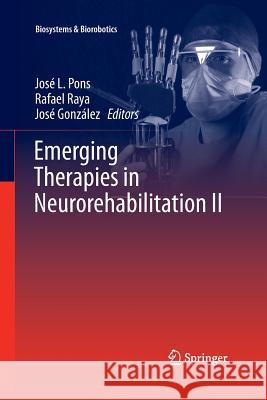Emerging Therapies in Neurorehabilitation II » książka
topmenu
Emerging Therapies in Neurorehabilitation II
ISBN-13: 9783319368221 / Angielski / Miękka / 2016 / 318 str.
Kategorie BISAC:
Wydawca:
Springer
Seria wydawnicza:
Język:
Angielski
ISBN-13:
9783319368221
Rok wydania:
2016
Wydanie:
Softcover Repri
Ilość stron:
318
Waga:
0.45 kg
Wymiary:
23.39 x 15.6 x 1.73
Oprawa:
Miękka
Wolumenów:
01
Dodatkowe informacje:
Wydanie ilustrowane











